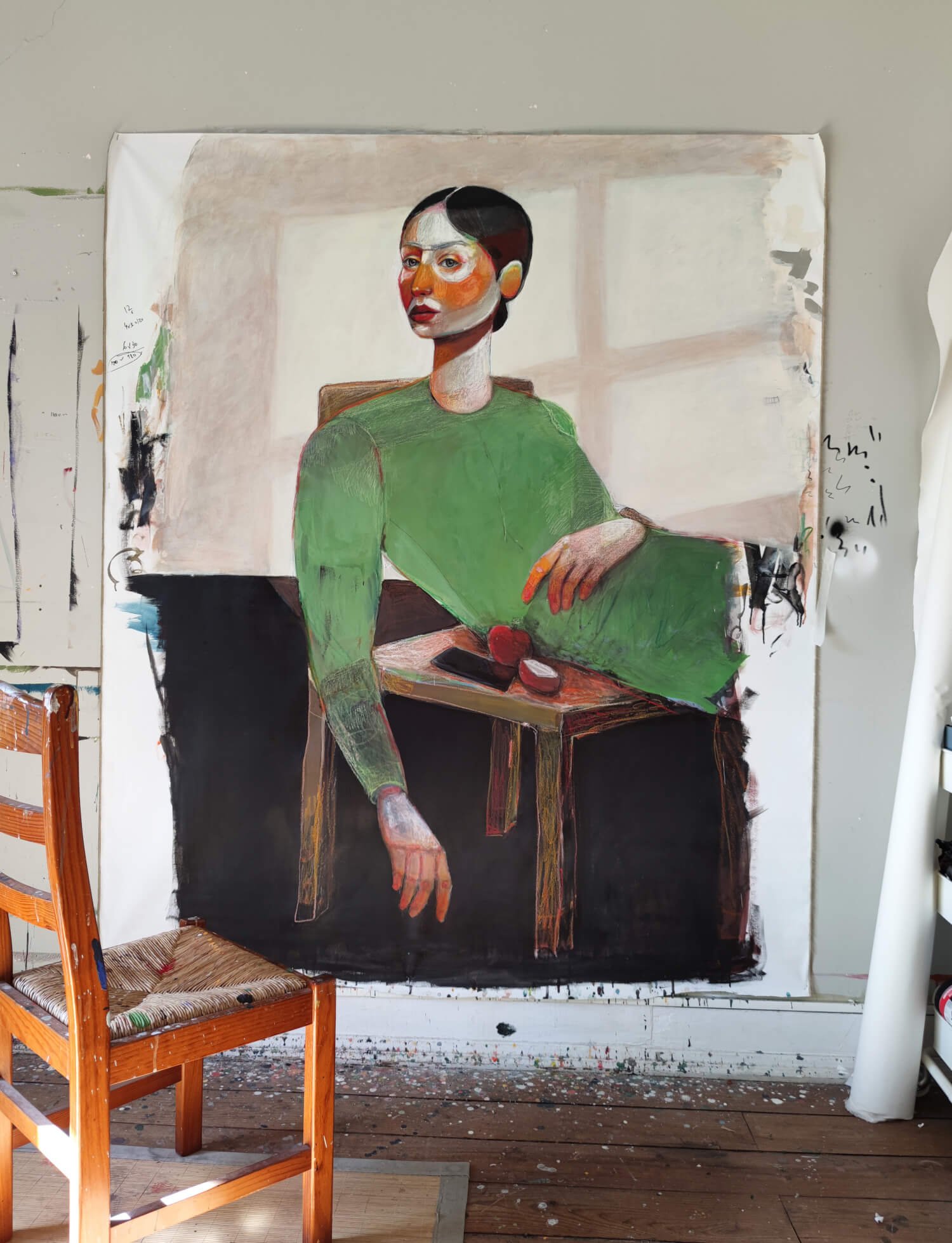Margarida Fleming
Margarida Fleming (b. 1988) is a self-taught Portuguese painter, originally from the small town of São Pedro do Sul and currently based in Lisbon. From an early age, she developed a strong connection to art, later expanding her creative foundation through studies in Architecture and Graphic Design.
Her artistic practice centers on figurative painting, particularly expressive female faces built through dense brushstrokes and layered color. Working primarily with acrylic and oil pastel on canvas, she creates compositions where mystery, emotion, and a powerful gaze coexist. Her work explores the intersection of tradition and contemporary visual culture.
By challenging conventional ideas of gender, beauty, and artistic norms, Margarida’s paintings invite reflection and open space for alternative narratives. She has exhibited both individually and collectively in cities such as Lisbon, Porto, Macau, and San Diego, and continues to use painting as a tool for exploring identity, empowerment, and visual freedom.
Artist Statement
My painting is figurative and unfolds across different scales through experimentation with various techniques and forms of expression, with acrylic and oil pastel on canvas being the most commonly used media. These materials allow for quick, dynamic strokes that strongly characterize my work. Oil pastels are used to reinforce contours and highlight shapes. The texture of the materials is visible, with overlapping layers of color contrasting with the solid areas also present in the paintings.
The features that construct my faces, deeply expressionistic, are dense. They aim to transcend biases related to gender and beauty. The human geography of my paintings evokes mystery—an emotional map defined by confident brushstrokes and honesty in the gaze. I consider my work to be influenced by expressionist painting as well as contemporary visual culture.
The women I paint are not based on real individuals—they are imagined figures. They are not simply women; they are the woman. These characters are strong and carry inspiring stories. They embody both delicacy and rigidity in their necks, tradition and modernity in their style. I explore their intentions in a simple way, where posture and presence speak for themselves. There is a deliberate repetition of features in these characters, as if to further define them into a singular identity.
There is a reference to tradition and the past, reinterpreted through a contemporary lens—as if there is a desire to remember what came before, to value the present, and to shape the future. Without forgetting the time that once was, and recognizing the time that gives us the freedom to become. Even after offering one possible interpretation, the viewer maintains their own freedom. It is deeply fulfilling when a spectator intuitively creates their own story. My art seeks to evoke emotion and to be free from stereotypes and predefined expectations.
margaridafleming.com
What does your creative process look like?
My process is intuitive and layered, involving quick, expressive gestures using acrylic and oil pastel that allow forms to emerge gradually. Texture, repetition, and the interaction between colour and solid areas shape the identity of each figure.
I do not follow a fixed process; it is mostly intuitive. I work with quick, expressive gestures,
What inspires you outside of the visual arts?
I am inspired by feminine culture and the dialogue between past and present, which nourishes the stories I tell. Music, places, and the richness of everyday life influence my sensibility. Often, it is in the smallest, unnoticed sensory details—those that quietly move me—where meaning is found.
How do you balance personal expression with the business side of your career?
I see personal expression and the business side as two parts of the same rhythm; one feeds the soul, while the other sustains the path. I remain true to my visual language while being mindful of how my work travels through the world. Authenticity guides me, but structure provides the freedom to continue creating.
What do you hope viewers feel or take away from your work?
I hope viewers feel a sense of recognition, as if encountering a story they somehow already knew, but also discover a new way of seeing—something quietly overlooked. My aim is to awaken both feeling and thought without prescribing meaning, leaving space for each viewer’s own memory and interpretation.







